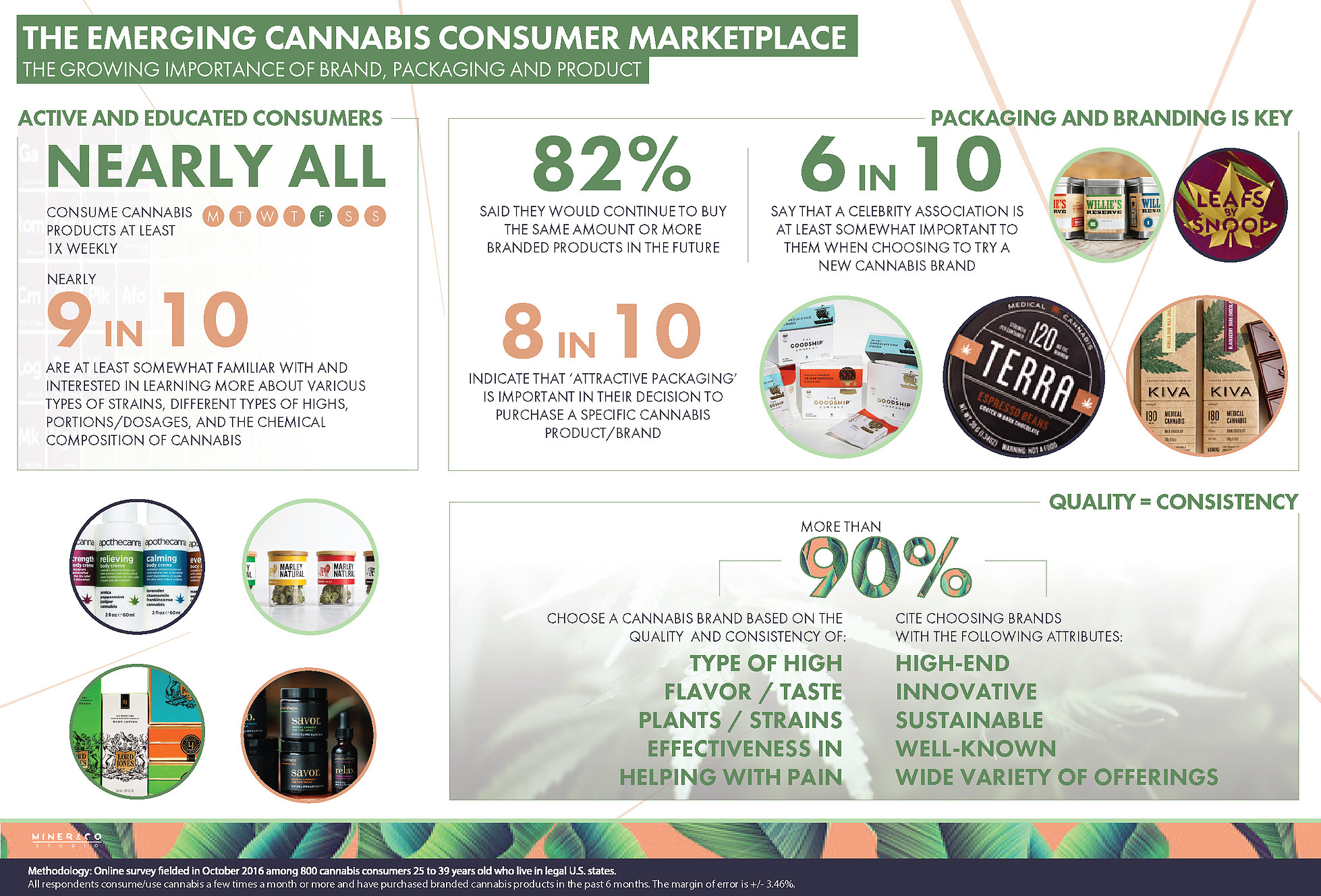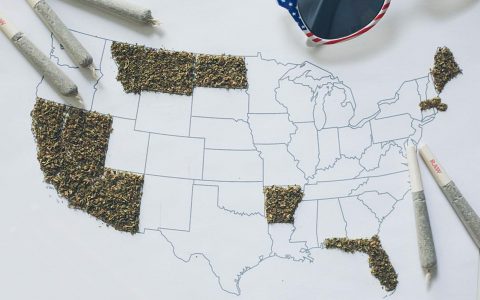New research by a national marketing strategy firm has turned up some surprising findings about Gen X and Millennial cannabis consumers.
Researchers at New York-based Miner & Co. Studio recently took a deep dive into the background, opinions, and buying habits of cannabis consumers in their twenties and thirties who live in legal states. Their survey of 800 brand-aware consumers in Colorado, Washington State, and California found that 90 percent of them use cannabis as part of their wellness and self-care regimens. Only one in ten used cannabis purely for get high or stoned.
“When our researchers went out and about with [our surveyed consumers] we saw active, engaged, mindful consumers,” the firm’s president and founder, Robert Miner, told Leafly earlier this week. 84 percent hold full-time jobs. 65 percent make more than $75,000 a year. “For most of them it’s about enhancement, not intoxication.”
Here’s an infographic with some of their findings:
Click on image to enlarge. Source: Miner & Co. Studio
Miner’s firm typically works with national brands like HBO, Levi’s, Comedy Central, Barnes & Noble, Comcast, MTV, and BBC America. Their past work with cable networks led them to wonder about the media’s portrayal of cannabis consumption on television shows.
“The media portrayal of cannabis consumption seems to be locked into a retrograde Jeff Spicoli, Dazed and Confused profile,” Miner said.
So his firm surveyed 800 cannabis consumers, between ages 25 to 39, in legal states. They focused exclusively on consumers who said they purchased branded cannabis products. (The study wasn’t an exhaustive survey of the entire market.)
What they found was that for those consumer, cannabis “is part of their wellness, mindfulness, and self-care,” Robert Miner told Leafly. “The experience they’re seeking is not one of being zoned out and zonked on the couch.”
That’s not how they’re usually portrayed in the media, though. Even culture-forward work like Broad City tends to treat cannabis like alcohol. “Even those shows that highlight cannabis use as part of the culture du jour, characters who consume are still portrayed as stumbling and bumbling,” Miner said. “That continues the propagation of the retro inept-stoner stereotype. It doesn’t reflect the progress that’s actually happening.”
Perhaps the most surprising finding: Among 25-to-39 year-old brand-aware cannabis consumers, political affiliation is nearly a 50-50 split. 49 percent identified as Democrats, 45 percent as Republicans. “Cannabis is politically agnostic,” Miner said. “Political party leaders may fall strongly into one camp or another, but their constituents—especially Gen Xers and millennials—are more accepting of cannabis across the board.”
Also surprising: 42 percent of the 800 brand-aware cannabis consumers surveyed are parents of kids under 18.
“That speaks to the idea that consumers in this demographic are using cannabis in the ‘mindful, present’ part of their lives, not in the ‘intoxication’ part of their lives,” Miner said. “Cannabis relaxes them, relieves stress, lets them refocus on what’s important.”
 Click image to enlarge. Source: Miner & Co. Studio
Click image to enlarge. Source: Miner & Co. Studio
The social, personal, and familial guidelines around cannabis are evolving day by day in these legal states, as parents learn how to appropriately store and handle cannabis. “When today’s parents were growing up, many of them knew their parents had a liquor cabinet, and they knew that wasn’t for them. In the households where these parents have children, they’re working out that same educational construct. The parents are finding ways to consume in a responsible, positive manner, and conveying information about it in a non-judgmental way, but also in a way that draws the proper guardrails around it for kids as they grow up.”
For cannabis manufacturers, the Miner & Co. Studio study reinforces the importance of brand design, packaging, and product quality. “That packaging should be more select, mindful, and convey quality,” Miner said. “These are generations [Gen X and millennials] into artisanal food, farm-to-table restaurants, mindful choices.” The language used by cannabis brands is evolving to adapt to that craft-scale emphasis. “We’re starting to hear some folks talk about ‘varietals’ instead of strains,” Miner said, as a way of incorporating the already-accepted language of food and wine into cannabis culture.
One of the survey’s overall takeaways: Brands should consider being more proactive and less defensive about their products. It’s not enough to convey the fact that a cannabis product is handled and packaged responsibly, as if to assure lawmakers and the public that it won’t get in the wrong hands. High-end winemakers don’t emphasize the safety of their bottles and corks. They present their product as an integral part of a positive, social, enjoyable evening. Cannabis can be similarly presented. “It’s more important to say: Here’s who we are as people,” Miner said, that we’re cannabis consumers who incorporate this product into our healthy, busy, successful lifestyle.


